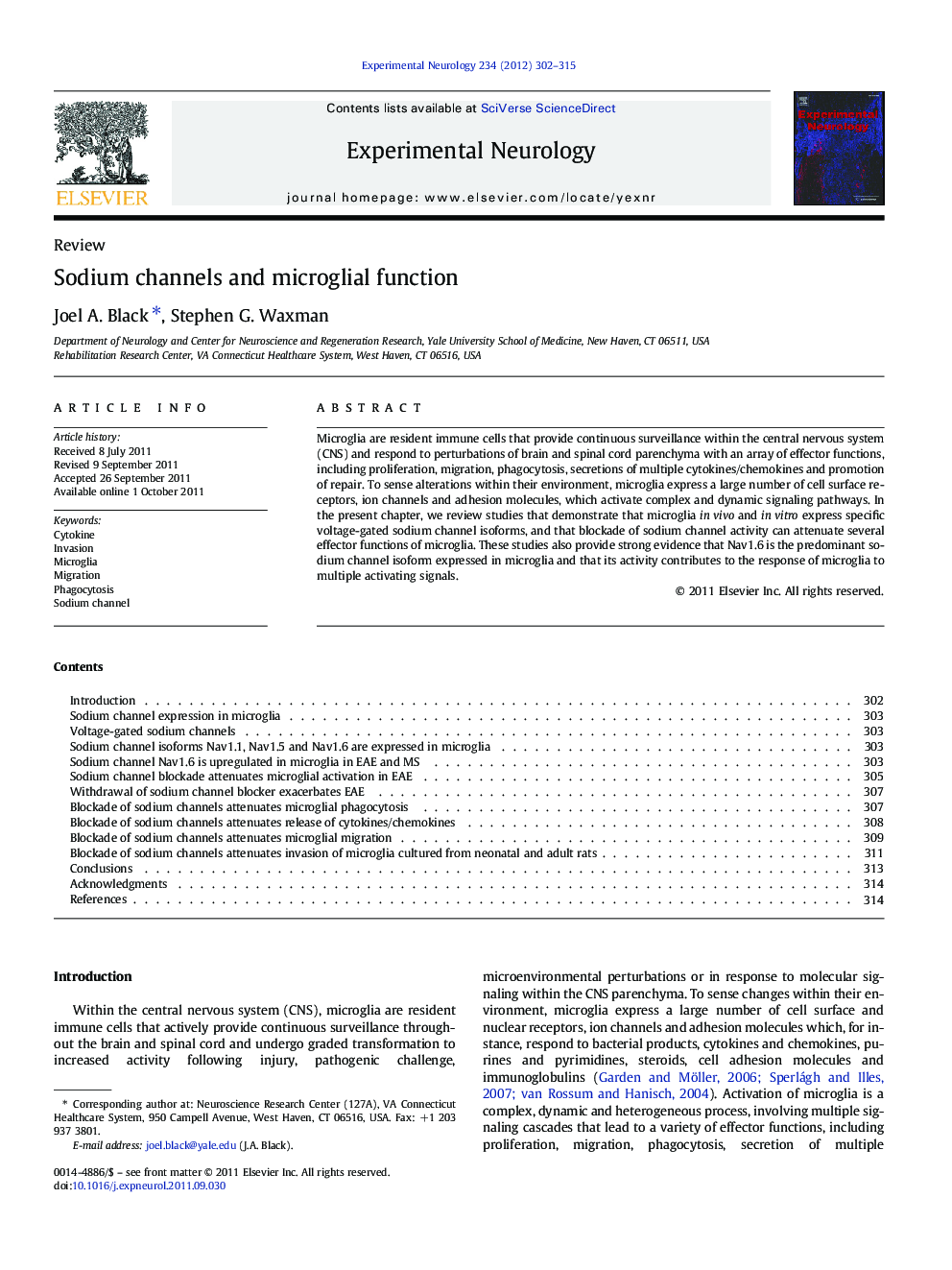| Article ID | Journal | Published Year | Pages | File Type |
|---|---|---|---|---|
| 6018792 | Experimental Neurology | 2012 | 14 Pages |
Microglia are resident immune cells that provide continuous surveillance within the central nervous system (CNS) and respond to perturbations of brain and spinal cord parenchyma with an array of effector functions, including proliferation, migration, phagocytosis, secretions of multiple cytokines/chemokines and promotion of repair. To sense alterations within their environment, microglia express a large number of cell surface receptors, ion channels and adhesion molecules, which activate complex and dynamic signaling pathways. In the present chapter, we review studies that demonstrate that microglia in vivo and in vitro express specific voltage-gated sodium channel isoforms, and that blockade of sodium channel activity can attenuate several effector functions of microglia. These studies also provide strong evidence that Nav1.6 is the predominant sodium channel isoform expressed in microglia and that its activity contributes to the response of microglia to multiple activating signals.
⺠Microglia in vivo and in vitro express voltage-gated sodium channels. ⺠Sodium channel blockade attenuates microglial migration, invasion and phagocytosis. ⺠Sodium channel Nav1.6 contributes to multiple effector functions of microglia.
